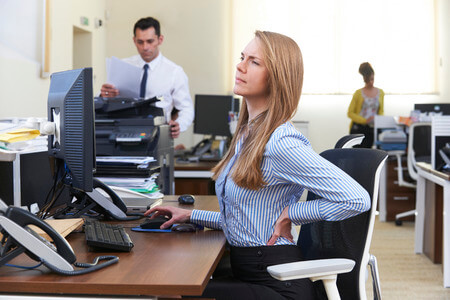Do you have persistent back pain? You are not alone. Up to 80% of Australians experience back pain at some stage in their lives.
Back pain
It can have a disruptive effect on your quality of life and pose a huge cost on the community.
Together with intervertebral disc disorders, back pain is the most prevalent work related problem and the percentage of people affected is increasing, with major implications on their productivity and quality of life.

Back problems include a range of issues typified by varying degrees of spasm, ache and/or stiffness.
It is related to the way bones, muscles, ligaments and tendons work together. Even a small strain in the soft tissues, without any damage to the spine can cause debilitating back pain.
Poor posture is one of the most common types of back & neck pain. Prolonged sitting, working in an incorrect position and lifting heavy weights can be factors in developing a back problem. We can provide simple corrective advise to resolve your symptoms.
How your spine works?
The spine allows for an extended range of movement. It is very flexible and it is made up from 33 vertebrae, separated by inter-vertebral discs that sit on top of each other. Small facet joints connect each level on either side at the rear of the spine and guide our fine movements.
The regions of the spine are:
- Cervical: 7 vertebrae
- Thoracic: 12 vertebrae
- Lumbar: 5 vertebrae
- Sacrum: 5 fused vertebrae
- Coccyx: 4 small fused vertebrae
Inside the vertebrae runs the spinal cord, which connects the brain to the rest of the body. On the outside, layers of muscles provide support and make the movement possible.

If you experience spinal pain, there are a few things that you can do yourself:
- Understand your pain: What makes it worse? What makes you feel better?
- Exercise and stay active as much as your physio recommends
- If you sit for too long, take breaks to get up and move
- Be aware of your posture and improve it - what you think is right may need slight correction
- Talk to your physiotherapist about adjustments that you can do to resume your active lifestyle.
- Understand that it is normal to experience stress. Learn to manage it and concentrate on your recovery.
When you come to see us, we will conduct a thorough physical exam and talk about your pain history to identify potential causes and triggers.
We will discuss if further investigation is appropriate and we will develop a treatment plan for you. If necessary, we can discuss your case with your GP ensuring the best level of care for you.
